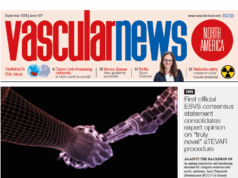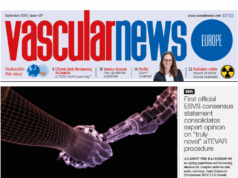
The European Society for Vascular Surgery (ESVS) has released 2022 clinical practice guidelines on the management of chronic venous disease (CVD) of the lower limb to update its 2015 recommendations. The document, authored by Marianne G De Maeseneer (Erasmus Medical Centre, Rotterdam, The Netherlands) and colleagues, was published online ahead of print in the European Journal of Vascular and Endovascular Surgery (EJVES).
The focus of the new guidelines, according to the ESVS, is on CVD of the lower limbs, related to pathology of the superficial, perforating and deep veins of the lower limb as well as to abdominal and pelvic venous pathology.
Compared with the 2015 version of the guidelines, the authors communicate that the global structure of the document has been modified considerably in an attempt to make it more practical and user friendly. In addition, they write that special subsections on management strategy with accompanying flowcharts have been added to the different chapters.
There are several new chapters in the 2022 document, addressing the management of patients with venous leg ulcers and of patients with varicose veins, related to underlying pelvic venous disorders, special patient characteristics and their potential influence on management strategy, and gaps in evidence and future perspectives.
De Maeseneer et al detail that five recommendations have been upgraded in the 2022 guidelines:
- The treatment of varicose vein tributaries by phlebectomies, foam sclerotherapy or both
- Transcutaneous laser for treatment of telangiectasias
- Endovenous thermal ablation (EVTA) for treatment of small saphenous vein incompetence in preference to surgery and ultrasound-guided foam sclerotherapy (UGFS)
- Surgical or hybrid deep venous reconstructions in patients with iliac vein outflow obstruction, suffering from a recalcitrant venous leg ulcer, severe post-thrombotic syndrome or disabling venous claudication
- Multilayer or inelastic bandages or adjustable compression garments (≥40mmHg ankle pressure) for patients with active venous leg ulcers
In addition, they note that three recommendations have been downgraded:
- Post-procedural compression after UGFS or EVTA of an incompetent saphenous trunk
- Ultrasound-guided tumescent anaesthesia for high ligation and stripping
- Phlebectomies with preservation of the saphenous trunk (ambulatory selective varicose vein ablation under local anaesthesia; ASVAL) for uncomplicated varicose veins













